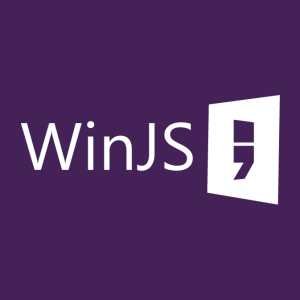Custom Software vs Off-the-Shelf Software: How to Choose Best For You
In today’s digitized business environment, applications and software are integral to any organization. The right software makes processes easier, more efficient, and cost-effective. One of the biggest questions that arise when a company is looking for special software is whether to order a custom program or an off shelf-one.
At Entrance Consulting, we recommend that you understand both options and their advantages, weaknesses, and most essential features, so you pick the right software. This blog sheds some light on the differences between custom and off-the-shelf software and the factors that can help you make the right choice.
What Is Off-the-Shelf Software?
Off-the-Shelf software is a ready-made solution that is mass-produced and introduced to a wide variety of businesses and individual consumers. Since it is a product developed for the mass market, it offers more features than a custom solution to respond to the needs of as many users as possible. However, it doesn’t usually meet the unique needs of a business.
What Is Custom Software?
Custom software is a tailored-cut software design to meet the unique needs of an organization. During the development of this software, your business requirements, demands, needs, and future growth are considered. It comes with features that perfectly fit your business’s personality to ensure you and your team can benefit from using all of the tools.
Custom Software vs. Off-the-Shelf Software: Pros and Cons
Now that you understand the primary differences between the two types of software, it is crucial to highlight the advantages and disadvantages of each, so you choose your perfect fit:
Off-the-Shelf Software Pros
- Cheaper: Off the shelf software is moderately priced and more affordable than custom-built software due to their mass production
- Quick installation and use: A ready-made software is designed for quick installation and use
- Reference point: It comes with a broad range of users and guides that you can reference before buying one. This helps you determine its suitability for your business.
- Community support: Since several other businesses use the software, you can Google or ask others for help when dealing with a problematic bug. With custom software, you must get in touch with the maintenance team to help you solve issues.
- Lower training costs: To maximize the benefits of software, you must train the staff on the ins and outs of the software. Ready-to-use products often come with training materials that enable each team member to get familiar with the software on their own. This helps save a lot of learning time and costs.
Off-the-Shelf Software Cons
- Will not meet all business needs: Although off-the-shelf software is a bit cheaper than a custom solution, it often offers half the capabilities and efficiency to meet unique business needs.
- Rigid and challenging to modify: As your business grows, you need to make critical changes and upgrades to accommodate the changes. Unfortunately, an off the shelf solution is rigid and difficult to modify
- Compatibility issues: There is a high chance that at some point, your business operating systems, devices, and other existing software will clash with a packaged solution at the base level. This makes it unusable or inefficient and therefore useless.
- Lack of competitive edge: By choosing off-the-shelf software, you go with a solution that is widely available for all your competitors. This means you won’t get a chance to implement innovative business ideas that give you a competitive advantage over your rivals.
Custom Software Pros
- Perfect solution for your business: Since it is built specifically for the unique challenges of your situation, a custom solution provides the ideal solution for your problem
- Wider usage: A custom product can be designed to meet each requirement that you outline in the evaluation phase
- Easily modified and expanded: Custom software can be modified and expanded easily to keep pace with changing business needs. The software offers a wide range of possibilities and options to modify and customize it so you get what your business truly wants.
- No license fees: Custom product provides ownership, meaning you don’t pay extra for a license fee.
- Scalability: A custom solution offers scalability to accommodate current demands and requirements while anticipating a company’s future needs.
- Offers competitive advantage: Since it is something that your rivals don’t have, your custom solution is well designed for you, thus helping you get ahead of your competition.
Custom Software Cons
- Costlier: Although it offers more advantages, a custom solution will definitely cost you more than an off-the-shelf product
- Longer development time: A custom software solution may take several months to develop. If you need a quick fix, a custom software solution may not be for you.
- Overdependence on custom software providers: A custom solution could leave you at the mercy of the custom software provider. If they were to shut down their business or become unavailable for some reason, your business would be significantly inconvenienced.
Custom Software vs. Off-the-Shelf Software: Factors to Consider
The following are some of the factors to consider when choosing software:
Scalability
Your business could be small now, but it will likely grow in a few years. When reviewing software, a critical thing to consider is whether or not the software has the functionality and bandwidth to increase in size. Great software solutions should offer long-term benefits rather than just quick solutions.
Customization
Each business is unique with special needs and requirements. It is crucial that you find software that can be customized to suit your company’s needs. The ideal product should be flexible enough to add features you need and remove those you don’t.
Security
With a rising wave of cybersecurity breaches, security is one of the most significant considerations to keep in mind when reviewing software. Go for a product that offers the best possible security to ensure both your data and that of your customers is safe.
Customer support
No software is free from bugs. That is why you need to choose a company that offers real-time ongoing tech support. Customer support is needed when learning about the new product and when recovering business data should anything be lost.
Ongoing maintenance requirements
Another critical thing to consider is the ongoing maintenance of the software. Software isn’t static, and the product you purchase will likely require ongoing maintenance and fees with each new version that is being released.
Custom or Off-the-Shelf Software?
The choice between custom software and an off-the-shelf solution requires a lot of thought. When choosing between the two options, you must look at long-term gains over quick wins. At Entrance Consulting, we believe custom software offers more benefits in the long run than an off-the-shelf solution.
If you need a custom software solution built to care for your current and future business needs, don’t hesitate to contact us today. The highly experienced software developer from Entrance Consulting provides tailor-made software to take your business to the next level. Contact us today to learn more.
Frequently Asked Questions
What factors should be considered when deciding between off-the-shelf software and custom software?
When deciding between off-the-shelf software and custom software, important factors to consider include:
- Business needs and requirements
- Budget and cost considerations
- Time constraints and urgency of implementation
- Scalability and future growth potential
- Customization options
- Competitive advantage
- Support and maintenance requirements
How does off-the-shelf software compare to custom software in terms of scalability and future business growth?
Off-the-shelf software may have limitations in scalability and adapting to future business growth, as it is designed for a broader market. Custom software, on the other hand, can be tailored to accommodate specific scalability requirements and future business needs.
What are the potential risks associated with off-the-shelf software in terms of compatibility with existing systems and devices?
Off-the-shelf software may pose compatibility risks if it clashes with existing operating systems, devices, or other software used in the business. This can result in usability issues or inefficiencies.
How does custom software provide a more secure solution compared to off-the-shelf software?
Custom software can be developed with specific security measures to address the unique needs of a business, reducing the risk of vulnerabilities or breaches. Off-the-shelf software may not offer the same level of tailored security features.
Can off-the-shelf software be customized to some extent, or is it limited to its predefined features?
Off-the-shelf software can often be customized to a certain extent through configurations and settings. However, customization is limited to the predefined features and functionalities offered by the software, and significant modifications may not be possible.
What level of customer support can be expected when using off-the-shelf software versus custom software?
Off-the-shelf software typically provides general customer support through documentation, user guides, and community forums. Custom software development often includes dedicated customer support from the development team to address specific issues and requirements.
How does the total cost of ownership compare between off-the-shelf software and custom software in the long term?
The total cost of ownership for off-the-shelf software tends to be lower initially due to the absence of custom development costs. However, custom software can offer long-term cost savings as there are no recurring license fees, and it can be tailored to fit the business’s specific needs, potentially reducing maintenance and training costs.
4 Reasons Why Shadow IT is Taking Over
The term “Tech Stack” is used to describe the collection of approved applications, software, and hardware that individuals or teams within a company use to perform their daily business functions.
The stack includes everything from your company’s communication tools like messaging solutions and email service providers to sales, financial, and HR software that your IT and management have approved for use by different teams to achieve your corporate goals.
However, wherever a company has an established technology program, there is a risk that employees may try to work around it and work outside the stack without consulting the IT department. Although working around approved technology is not a new issue, the recent trend toward remote work and other cultural factors can worsen the problem.Read More
7 Ways a Software Consultant Can Help You See Around Your Blind Spots
You know your business like the back of your hand. You’ve been in it for years, and you know every inch. But even the most experienced business owners can have blind spots when it comes to their industry. That’s where a software consultant can help. They can provide an outsider’s perspective that can help you see around your blind spots and make better decisions for your business. We’ll discuss how a software consultant can help you and give some relevant statistics to back it up.Read More
Legacy System Modernization Approaches And Strategies
You’ve been contemplating legacy system modernization for a while now. But, what does it take to implement? We reveal 6 modernization approaches and what it takes to implement them.Read More
What is a legacy system?
Legacy systems present challenges in a modern market ecosystem. Learn why you should modernize your legacy system and what modernization entails.
Read More
Ed-Fi Compliant Data Exchange vs. Custom Data Warehouses
Looking to derive actionable insights from your data? If so, which data repository is best? In this post, we highlight the benefits of custom data warehouses when Ed-Fi compliant data exchange isn’t possible.Read More
When to Use NoSQL vs. Relational Databases
Designing applications in the era of Industry 4.0 can be a challenge. Learn how to leverage NoSQL and relational databases to your advantage when it comes to app development.
Read More
7 Timely Questions to Determine the Efficacy of Your Tech Stack
How do you decide when to modernize your tech stack? We reveal seven important questions to ask before you make the leap.Read More
Streamlining the Midstream Oil Industry With Digital Transformation
In a climate of uncertainty and market volatility, learn how your midstream oil business can leverage digital transformation to gain a competitive edge.Read More
4 Critical Reasons for Adopting Enterprise Application Integration in Manufacturing
The economic downturn has exposed supply chain vulnerabilities, but enterprise application integration can bolster outcomes for your business. Learn how.
Read More
5 Ways To Mitigate Risk on Software Projects (AKA – What To Do When Your Developer Gets Hit By A Truck… Literally)
I’ve been involved in a lot of development projects — I’ve seen the good, the bad, and the ugly. One of the scariest things that can happen in a software project is losing your developer for some unforeseen reason. This kind of thing happens even when you have a big team. Because they are typically highly visible, you definitely want to do as much as possible to mitigate risk on software projects.
What if your developer gets hit by a bus? Sounds like hyperbole, right? Not in Houston traffic…
I remember a project where we’d just finished a major release cycle for one of our biggest clients. The application had been developed, tested, installed, and running at the client site for over a month. All of the functionality had been run through the grist mill and came out looking pretty good. The major bugs were resolved, and even the minor ones were well on the path to being fixed. Tired from long hours and war room readiness, the whole team was ready for some delayed time off.
The only team members left on site were a senior developer from the project and a handful of cross trained devs intended to backfill in case something came up. Then, the worst happened. The senior dev was in a 5 car pile-up coming back from the client site. Thankfully, he was OK, but he was going to be unavailable for a few days while he dealt with doctors, insurance agents, and mechanics. The project team only had a skeleton crew of developers with only a surface level of experience with the project.
Of course, suddenly we discovered that a major bug that was preventing their payroll from going out. With large portions of the team out of state, the person responsible for functionality on a cruise somewhere out in the Gulf of Mexico, and the senior developer in the hospital, we were left scrambling to fix the issue for the customer.
Fortunately, this story has a happy ending. We were able to fix the issue in the code relatively quickly. It was a minor bug arising from a business case that realistically never should have come up. We were able to quickly add functionality to handle the case logically because the code was clean and conformed to our standard best practices. Deployment followed standard procedures we had documented in our document store, and the client was able to get their payroll out on time. We managed all this without ever having to approach the client with excuses about a delay due to unavailable personnel.
Still not convinced you need to mitigate risk on software projects? Here’s another one:
We’d been brought in to help out on a number of line of business web applications to track the movement of product through warehouses. Our client was very happy with their original developer’s work. The app functioned as intended, and when they did find a problem, he was able to quickly fix it with almost no delay. He wasn’t a developer by trade, but had picked it up in order to fill the need at the company. When he moved on, they brought us in to help carry them through to completion on the project.
There wasn’t a lot of documentation, so I was left with the task of searching the client’s dev servers for the project files and piecing together how the application communicated across several different solution files. I was able to figure out the application sufficiently to make the requested behavior change, and copied the project up to the client’s staging server for review.
The client’s response was eye opening. While they were perfectly happy with the changes, they were confused because it looked like the application had been reverted by several years. After a quick panicked search, I discovered the truth. The reason that the developer had seemed so responsive to the client’s requests was that he had abandoned both the dev and staging servers entirely and was doing his development work straight against the production server.
Our next task for that client was scouring the various production servers to find the latest versions of all of the individual pieces. This process was complicated due to the developer’s source control method of creating backups of project files in subdirectories. We had to go into one project to find which project had its directory hard coded in, and in at least one case, several instances of one project were referenced by other projects on different servers.
We then created a source control server and backed up each of the client’s projects, recreating their production environment in dev, this time with documentation.
Relying too much on one developer is always a scary proposition. Sometimes, however, it’s unavoidable. It’s just not efficient to have multiple people spun up on a single function at one time. Entrance has some good policies in place to mitigate that risk.
Here are a few ways we mitigate risk on software projects so our clients don’t experience any impact due to unforeseen issues:
-
Documentation, Documentation, Documentation
The first and foremost line of defense is documenting everything, and storing it in a standard location and format. In the case of our own developer’s unplanned absence, we were able to quickly locate his deployment instructions and follow them step by step.
-
Standard Development Practices
Every developer prefers to write code a little bit differently. This isn’t something you can or should control. Much like normal writing, though, a developer will write code very differently if he’s expecting someone else to be reading his code. Frequent code reviews and software enforced formatting practices ensure that the developer is forced to remain in the mindset that he’s writing not just for himself and the computer, but for the other humans who will be working with it later. In our case, this meant being able to quickly locate the relevant code, understand what it was doing, and fixing the problem.
When looking at code that wasn’t written to be read by others, it’s frequently more difficult than necessary to trace. Best Practices are frequently omitted for expediency.
-
Source Control
Source Control is not optional. In addition to providing a backup in case of hardware failure or destructive change, it allows later devs to track the history of a given piece of code. Why and when changes were made is too important to be left to tribal knowledge.
-
Cross Training
When you’re short a developer, it’s too late to train a new one up on an application and stack. In the best of cases, your familiar people will all be busy working. In the worst cases, you won’t have any familiar people at all to do the training.
Ensure that you’ve got someone that can take over. They don’t need to be completely familiar with the intimate details, but they do need to be familiar enough to read through the documentation and start fixing problems in a short time.
-
Process
Each of the above items only work if they are performed regularly and consistently. Worse, you frequently only find out what isn’t being done when there’s a problem, and failure to have the safeguards in place that you think you do is the quickest way to turn an emergency into a disaster.
It’s not enough to set up a policy, you’ve got to verify that it’s being followed.
In short, in my experience, it’s a good idea to plan for having people unavailable, and the best way to do that is to build an organization around sound policies and mutual support. Having a single developer working in isolation may feel cheaper in the short run, but it exposes you to a lot of unnecessary risk.
Using Dashboards and Exception Monitoring to Increase Production Efficiency
I recently attended a conference discussion about using dashboards and exception monitoring to increase production efficiency for production maintenance engineers by directing their attention where and when it is needed, while also including the appropriate diagnostic information for the situation. This allows for earlier detection of potential issues, in time for planned fixes rather than unplanned outages.
The classical dashboard model involves a high level overview with composite KPIs where deviances can be spotted and drilled into to diagnose. This can be as simple as a daily pump status report of average on/off times, power consumption, and pressures. Oddly enough, we’ve written this report for Shell. These reports are run and delivered on a fixed schedule, or are made available when an Engineer or Tech specifically calls for them.
Exception based reporting monitors the system on an ongoing basis, and raises warnings to the user when they need to be reviewed. In an exception monitoring paradigm, you find the problems much earlier because it isn’t necessary for the exception to deviate the entire trend line before it’s brought to your attention. Awk. This is basically just saying ‘you find it earlier because you’re looking at fewer numbers rather than the average, and the system knows the difference between a dip caused by normal variation in the data and a true downward trend’. In many cases, the trend line and change is more important than the average, but a simple dashboard has no way of knowing whether the change is transient or continuing, while an exception based system can be more proactive about monitoring potential issues.
An additional advantage to the exception monitoring paradigm is that it operates on a push model that can safely be left until it asks for your attention. A good manager will keep an eye on the high level detail under his purview and occasionally spot check details. A monitoring structure that requires attention be placed on a myriad of dials and graphs for hundreds or even thousands of pieces of equipment is subject to oversights, oversights that lead to costly unplanned outages or worse problems. The push model frees the monitor to focus on strategic tasks with the knowledge that tactical needs will be brought to his attention as soon as the problem could reasonably be diagnosed. Spot checks are still useful, but now the engineer has additional detail at his disposal while making these checks.
Finally, the exception model reduces the expectation that the user will check the dashboard everyday with their full attention. When running dashboards or other daily reports, a problem is at best a single red cell on a large spreadsheet. More generally, it’s a single abnormal number in a sea of numbers that are within the same tolerance ranges every day. Exceptional well behavior should be called out in an exceptional manner, in a report, status message, or dashboard whose arrival is an event, and not the expected daily report to be reviewed at leisure on the off chance there’s a problem contained in it.
SCADA monitors and other fault detection systems have their place, ensuring critical safety factors are met and that systems shut down in a controlled manner in the event of a true emergency. Exception monitoring allows the engineers to describe complex scenarios using data from a myriad of sources, where the expected system outcome is a red-flag, and the engineer’s reaction is to review the data closely, with the attention that comes from the certainty that there’s actually a problem to find.
This doesn’t mean that the engineer is excused from monitoring the big picture either. Those dashboards still have a very important place monitoring overall system health, status and trends. Exception monitoring is to ensure that a true problem will be caught, and that a costly pump failure that could have been predicted if the engineer had only chosen that pump’s data to look at for the day doesn’t happen.
We also talked about how creating diagnostic dashboards served as a useful tool for documenting the diagnostic knowledge of an aging engineering corps. Asking an experienced engineer what data he would like to see when a condition he’s flagged as exceptional occurs is the same as having him explain to a younger engineer what steps he would take to diagnose a fledgling problem on the verge of becoming an expensive outage. Creating a diagnostic dashboard in this situation helps the experienced engineer do his job easier, at the same time it helps a younger engineer do his job more correctly.
When the engineer gets the report, he not only sees the problem, but he has, immediately, all the data that he would have to go find in a variety of systems. This can save them minutes or even hours of data collection, allowing them to resolve the problem and move on.
In addition to the possibilities arising from custom application development, there are a number of purpose built tools on the market that provide this functionality such as P2’s Explorer and Sentinel products. Microsoft provides a number of monitoring tools for data in motion that operate on a daily, rather than real time, manner. These principles can be used in any data management solution, whether monitoring data flowing into a data warehouse, or watching it fly by in a real time SCADA system.
The primary lesson for me was, don’t send users a daily report and expect them to routinely check for the absence of errors. Only send the report when there’s something to see, and then, improve that report with a dashboard giving up to date and targeted diagnostic information. When you do that, you’re adding the diagnostic knowledge to the enterprise, not to an engineer’s head.
The Microsoft Single Page Applications Approach: WinJS
 Microsoft has been steadily working to improve WinJS, their implementation framework for Single Page Applications (SPA) using JavaScript. This framework is a modern alternative to existing ASP.NET client-side infrastructure (MVC and WebForms). At Entrance, our approach for SPA uses several frameworks: Backbone Marionette, jQuery, Underscore and Bootstrap. If we were to look at getting on Microsoft’s bandwagon for SPA and utilize WinJS, where would it fit in with what we are doing now?
Microsoft has been steadily working to improve WinJS, their implementation framework for Single Page Applications (SPA) using JavaScript. This framework is a modern alternative to existing ASP.NET client-side infrastructure (MVC and WebForms). At Entrance, our approach for SPA uses several frameworks: Backbone Marionette, jQuery, Underscore and Bootstrap. If we were to look at getting on Microsoft’s bandwagon for SPA and utilize WinJS, where would it fit in with what we are doing now?
WinJS offers a suite of controls that utilize Responsive UI concepts (i.e., the layout dynamically adjusts based on available screen space and resolution). This is a competing offering to what Bootstrap provides, so it really only makes sense to pick one or the other here. Microsoft officially supports integration with AngularJS, KnockoutJS, and ReactJS, so while possible, it may be challenging to work with WinJS using other frameworks (e.g., Backbone, which is what Entrance uses now). There is some information available on how to use Backbone and WinJS together, but it is limited and the integration is not officially supported.
The big switch would be to have WinJS manage the UI components, including databinding and events. Backbone would only handle view structure and routes. This is a large switch in terms of re-training and learning up on how all the new components work together. Microsoft just released its latest iteration of WinJS 4.0, so it is clear there is significant corporate backing. However, with WinJS itself still being new as a cross-platform SPA framework (prior to WinJS 3.0 it was for Windows only), I don’t think the difference in capability compared to Backbone is meaningful enough to warrant a retooling of our consultants just to use a different framework. If Microsoft continues development of WinJS and it becomes clear that the community begins to standardize around WinJS, then it may make sense to revisit our current toolset based on Backbone.
A Great First Ride!
Custom Software: Your Business Logic, Codifed
When it comes to software, every company has to evaluate whether an off the shelf or custom software option makes the most sense. Off the shelf products are often cheaper, but they may not be able to provide the complete functionality that your team needs to get their job done. For one pipeline engineering services firm, a custom software application made the most sense for them because they needed a product that could specifically encode their business logic.
Visual Studio 2012 update 2 released
Visual Studio 2012 update 2 was released yesterday and it contains a variety of new features that I thought might be notable to some of you. In particular:
Visual Studio 2012 now supports code reviews via TFS 2012: Software Consulting Tip
Software consulting and custom software development requires that we keep up with new technology. As such, I wanted to share a best practice related to Visual Studio and Code Review.
C# Generics Summary: Methods, Types and Specifying Generic Type Parameter Constraints
Generics in C# are classes, structures, interfaces, and methods that have type parameters for one or more of the types that they use. For example, instead of using a collection class that allows any type, we can use a generic collection class and define the specific type(s) for the collection. The primary use case of generics is indeed to create type-safe generic collections and enumerators. Generics can also be used in lambda expressions, delegates and utility code.
There are a number of benefits of using generics. First, it promotes code reusability by writing code that is independent of the type(s) used for generic type parameter(s). Performance over object collections is improved because no runtime casts or boxing conversions need to be performed. Lastly, generics promote type safe programming and allow type inference to determine type parameters without requiring explicit specification.
Why use Linq instead of SQL?
To give you an idea of what Linq looks like, and how it compares to SQL code, below are some very simple queries in both SQL and Linq. This assumes a Customer table with columns ID and Name:












